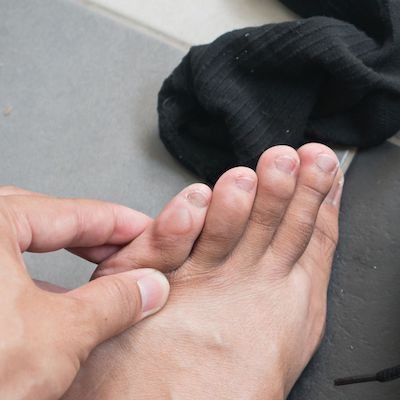Blister Care for Your Feet
When you feel a sharp, stinging sensation in your feet, you can guess what’s forming: the dreaded blister. They are small but painful pockets of fluid that form from friction against the skin, and can make every step painful. Why do they form and how can you treat and prevent them? Read on to find out!
How do blisters form?
Blisters form when there is friction against the skin, typically from a repetitive movement like walking or running. Runners are especially susceptible, as the moisture that builds up inside the shoes from sweat and heat can make feet swell, and cause the skin to rub against the socks. Another prominent cause is shoes that do not fit properly. If they are too tight or too loose, your feet move excessively and lead to areas where friction can occur. Blisters are also common for people who have existing foot conditions like bunions, hammertoes, or other deformities.
How do you treat blisters?
The first thing to do is to prevent further damage by stopping whatever activity is causing your blister.
Soak your foot in an Epsom salt bath for relief.
Keep the area clean and dry and keep it covered.
Apply antibiotic cream if it’s an open blister to prevent infection.
If the blister is open, or located underneath the nail or in other areas where treatment is difficult, seek treatment from a podiatrist. Do not attempt to pop the blister yourself, as you increase your risk of infection.
How do you prevent blisters?
Prevent blisters by:
Ensuring that your shoes fit properly - make sure the toe box, width, and length of the shoe is appropriate, and notice how much your foot moves as you walk or run. If your heel moves up and down as you walk, or if your toes feel compressed in any way, the shoes are not a good fit. If you are shopping for new shoes, be sure to go in the afternoon when your foot is most swollen.
Wearing moisture-wicking socks - Moisture in your socks can lead to blisters, so choose materials that help wick away moisture like nylon, polyester, polypropylene, and micromodal. Cotton absorbs and retains moisture, so avoid wearing 100% cotton socks.
Covering susceptible areas - Apply tape or bandages to protect areas that are prone to blisters. You can find waterproof, breathable tapes to apply on your skin, as well as patches you can place inside footwear to provide a layer of protection.
Blisters may seem like minor nuisance, but for those with preexisting conditions like diabetes or circulatory issues that affect healing, any small wound needs to be addressed by a foot doctor to prevent infections and other serious consequences. Seek treatment and advice from our podiatrists, Dr. Eric Feit, Dr. Alona Kashanian, and Dr. Roohbakhsh Maher at Precision Foot and Ankle Centers. With years of experience and dedication to providing compassionate, premier foot and ankle care, they can help you manage and recover from your foot and ankle issues and get you back on your feet! Make an appointment by contacting any of our offices in Los Angeles, Torrance, and San Pedro today!

